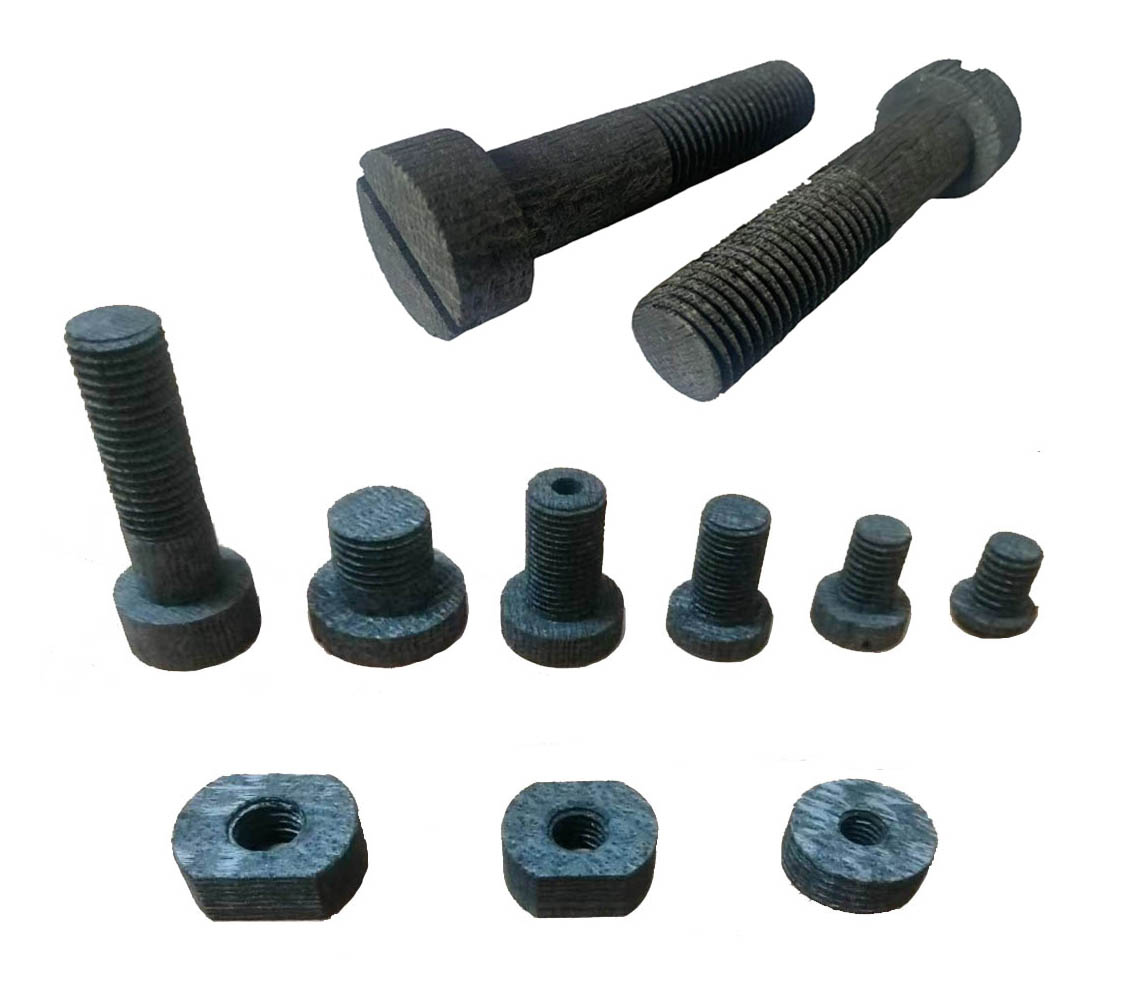Nylon has a variety of advantages, such as mechanical properties, heat resistance, wear resistance, corrosion resistance and self-lubricating advantages. But adding carbon fiber to nylon can make the material have higher modulus and rigidity, and also improve electrical conductivity. The proportion of carbon fiber added to the material determines its strength and conductivity. Adding 30% carbon fiber can improve the electrical conductivity by 10 times and become a conductive material. At the same time, carbon fiber can also greatly enhance the wear resistance and strength of nylon, improve the impact resistance. The composite material of carbon fiber and nylon can reduce the weight of the product while improving the performance of the product, and the typical application is the saddle of the horse racing and the seat of the bicycle racing.
Polytetrafluoroethylene, also known as fluoroplastic, has the advantages of low coefficient of friction, good chemical and thermal stability. However, pure polytetrafluoroethylene is not wear-resistant, poor mechanical properties, easy to creep. Adding about 15% carbon fiber to fluoroplastics can make the comprehensive performance of fluoroplastics better, better wear resistance, higher strength and longer service life. Can be used to make composite seals, guide support rings, etc., in reciprocating and rotating conditions, especially in the water lubrication conditions will be better than other composite materials.
Polyether ether ketone is a kind of new engineering material of semi-crystalline polymer, which not only has excellent mechanical, heat and chemical resistance properties, but also has low friction coefficient and good bearing meshing. It is another kind of good self-lubricating material after polytetrafluoroethylene (PTFE), which performs better in terms of bearing capacity and wear resistance. It is especially suitable for harsh environments such as no lubrication, low speed and high load, high temperature, humidity, pollution and corrosion. Adding carbon fiber to polyether ether ketone can improve the comprehensive properties of the material. When 30% carbon fiber is added, the tensile strength is doubled compared with that without reinforcement, and it reaches three times at 150℃. The reinforced composite material has also been greatly improved in terms of impact strength, bending strength and modulus, and the elongation is sharply reduced. The thermal deformation temperature can exceed 300℃. The addition of carbon fiber not only enhances its mechanical properties, but also has an important impact on its frictional properties.
With high toughness, the fracture toughness KIC of the cured material reaches 2.3MPa.m1/2;
• Thermal plasticity and recyclability, soluble in organic solvents;
• Excellent fiber wettability and fluidity, low impregnation temperature
↓
Die forming, coil forming, internal pressing, vacuum bag pressing, etc., mainly used in
Automotive zero lightweight and sports leisure and other fields


C/C fastener is a commonly used fastener with the following characteristics and advantages: 1, high strength: C/C fasteners are made of carbon fiber reinforced materials, with very high strength and stiffness, can withstand a large load. 2, lightweight: compared with traditional metal fasteners, C/C fasteners have lower density, so light weight, suitable for occasions with high weight requirements. 3, corrosion resistance: C/C fasteners have good corrosion resistance and are not eroded by common chemical substances, and are suitable for use under various environmental conditions. 4, high temperature resistance: C/C fasteners can maintain stable performance in high temperature environment, without thermal expansion or loosening problems. 5, high precision: The manufacturing process of C/C fasteners is high precision, which can provide high connection accuracy and ensure the accuracy of assembly. 6, fire resistance: C/C fasteners have high fire performance, not easy to burn, can provide additional safety protection in emergency situations such as fire. 7, insulation: C/C fasteners are a non-metallic material, with good insulation properties, can be used for occasions that require electrical insulation. In general, C/C fasteners have the advantages of high strength, lightweight, corrosion resistance, high temperature resistance, high precision, fire protection, insulation, etc., and are suitable for fastening needs in various industrial fields and special environments.
Sizing agent is the most important component of carbon fiber, and its main function is to protect the carbon fiber, reduce the hairiness and breakage of the carbon fiber in the subsequent deep processing process, as well as the surface active functional groups of the fiber after surface treatment. The effect of sizing agents on the surface of carbon fibers is mainly manifested in the following aspects: firstly, similar to adhesives, improving the fiber's bundling function, improving its processing performance, and facilitating subsequent processing; The second is similar to coupling agents, which improve the chemical bonding between carbon fibers and resin interfaces and improve interface performance; Thirdly, it is similar to a wetting agent to improve its surface wetting performance, shorten resin impregnation time, and improve product production quality; The fourth is similar to lubricants, which protect the surface of carbon fibers, reduce friction during subsequent processing of carbon fibers, and minimize the damage they suffer; Finally, the slurry film has a certain reinforcing effect on carbon fibers, and the sizing process can to some extent compensate for fiber defects.
Oil agent is the most important auxiliary agent for producing high-performance PAN based precursor. Compared to general textile finishing agents, PAN based precursor specific oil agent not only has properties such as bundling, anti-static, friction resistance, and lubrication, but also has special properties such as high temperature resistance, anti melting, and anti adhesion. Research data shows that an excellent oil additive can contribute up to 10% to 30% of the tensile strength of carbon fibers. Oils can generally be divided into high silicon, low silicon, and silicone free oils, which are selected according to the different needs of customers.
Contact us directly to discuss and our company can help you find a product to compliment your process.